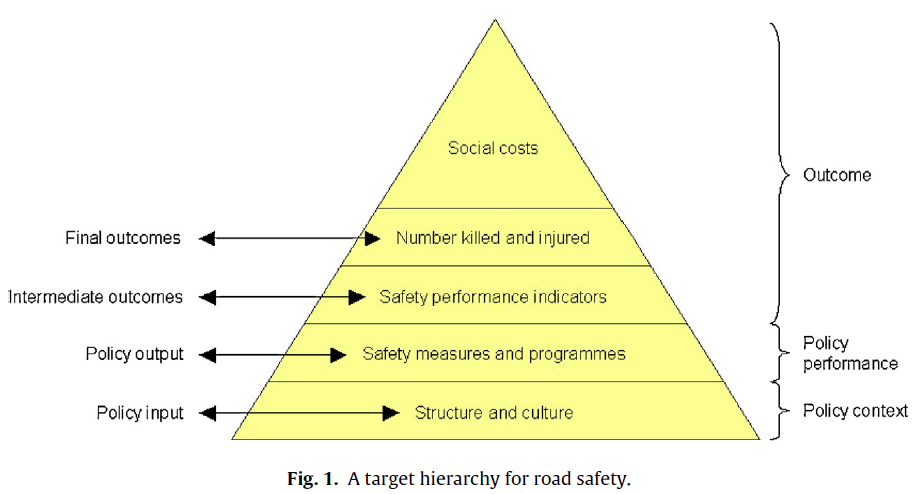
This research aims to explore the relationship between road safety management and road safety performance at country level. For that purpose, an appropriate theoretical framework is selected, namely the ‘SUNflower’ pyramid, which describes road safety management systems in terms of a five-level hierarchy: (i) structure and culture, (ii) programmes and measures, (iii) ‘intermediate’ outcomes’ – safety performance indicators (SPIs), (iv) final outcomes – fatalities and injuries, and (v) social costs. For each layer of the pyramid, a composite indicator is implemented, on the basis of data for 30 European countries. Especially as regards road safety management indicators, these are estimated on the basis of Categorical Principal Component Analysis upon the responses of a dedicated road safety management questionnaire, jointly created and dispatched by the ETSC/PIN group and the ‘DaCoTA’ research project. Then, quasi-Poisson models and Beta regression models are developed for linking road safety management indicators and other indicators (i.e. background characteristics, SPIs) with road safety performance. In this context, different indicators of road safety performance are explored: mortality and fatality rates, percentage reduction in fatalities over a given period, a composite indicator of road safety final outcomes, and a composite indicator of ‘intermediate’ outcomes (SPIs). The results of the analyses suggest that road safety management can be described on the basis of three composite indicators: “vision and strategy”, “budget, evaluation and reporting”, and “measurement of road user attitudes and behaviours”. Moreover, no direct statistical relationship could be established between road safety management indicators and final outcomes. However, a statistical relationship was found between road safety management and ‘intermediate’ outcomes, which were in turn found to affect ‘final’ outcomes, confirming the SUNflower approach on the consecutive effect of each layer.
| ID | pj79 |
| Manuscript | |
| DOI | |
| Tags | road safety strategy, statistical modelling |







